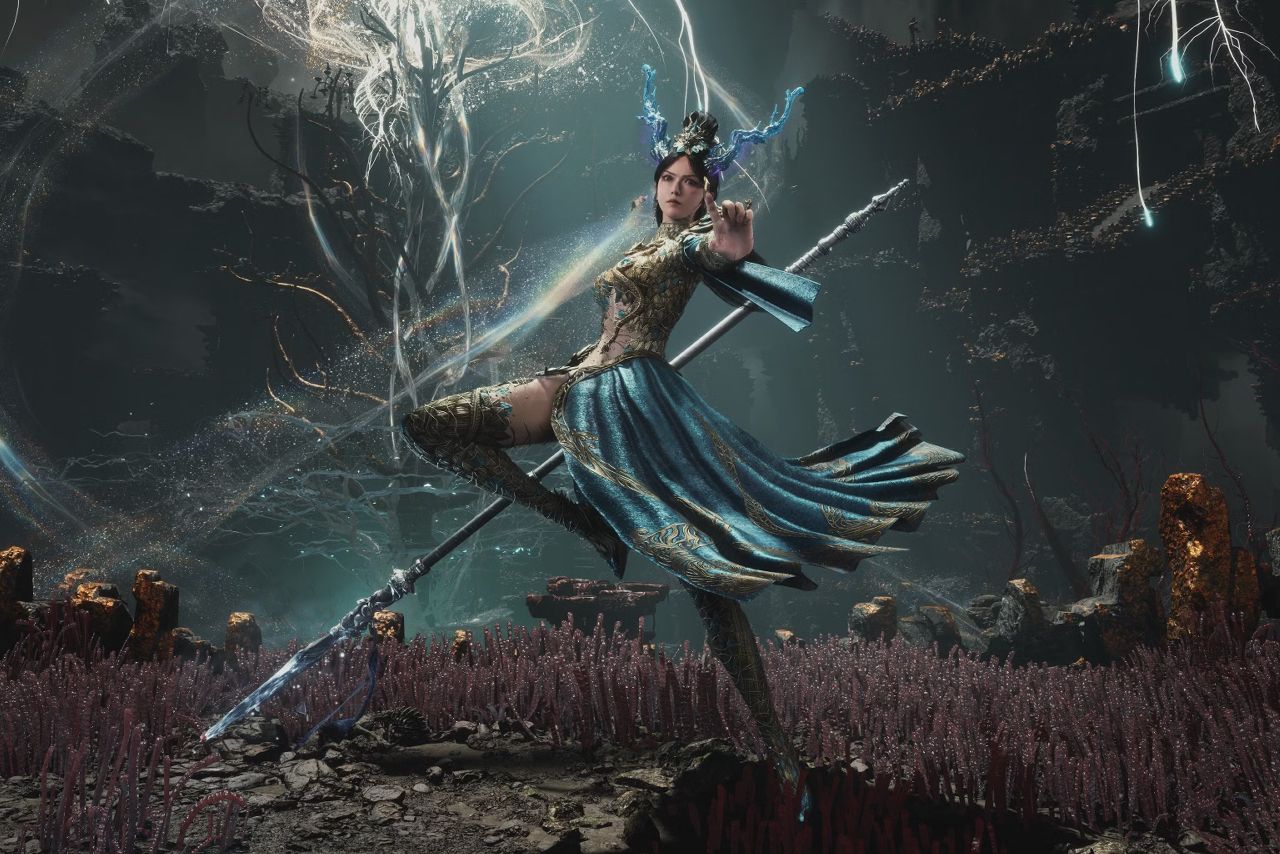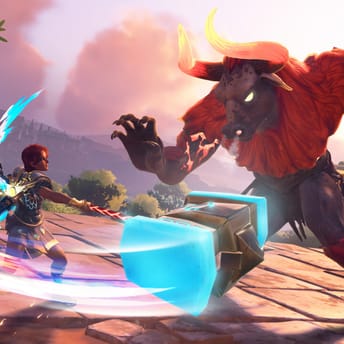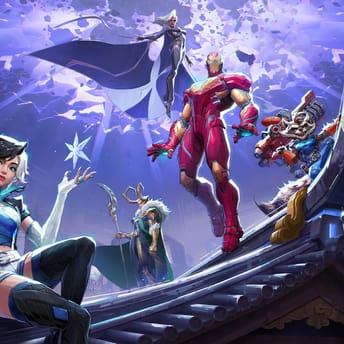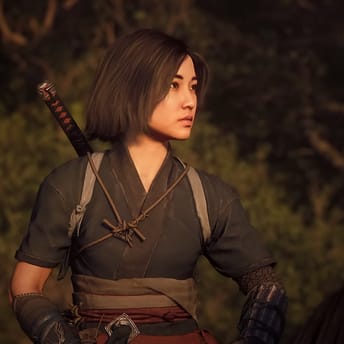
Wuchang Fallen Feathers: Best PC Settings and Performance Guide
|
|
Wuchang: Fallen Feathers, built on Unreal Engine 5 by Leenzee Games and published by 505 Games, debuted on July 24, 2025, for PC (Steam and EGS), PlayStation 5, and Xbox Series X|S. While its setting and soulslike gameplay impress, the PC release suffers from shader compilation stutter, Lumen and volumetric fog spikes, and heavy VRAM pressure from textures and UE5 effects, causing even top-end systems with RTX 5080/RX 7900 XTX GPUs to dip below smooth frame times. In contrast, the console versions maintain a steady 60 FPS. In this guide, we dissect every graphics option: DLSS, FSR, TSR, shadows, GI, fog, and more—to help you get back stable performance without dulling the game’s atmosphere.
Display Settings in Wuchang: Fallen Feathers
Exclusive fullscreen vs borderless fullscreen
When using exclusive fullscreen mode, the game gains direct, exclusive access to the swap chain (the mechanism that transfers frames from the GPU to the display). During this state, the Desktop Window Manager (DWM) is disabled, and the graphics driver follows a simplified presentation path. This yields a small benefit: frame rates are typically around 5% higher (depending on the Windows version and driver), and input lag drops by a few milliseconds because frames bypass DWM. The trade-off is usability: invoking overlays, pressing Alt-Tab, or performing any window switch becomes more difficult, as the rendering thread may pause briefly, and the screen can go black for a second.
Borderless fullscreen, on the other hand, renders as part of the regular desktop. Modern Windows versions use a flip model that has significantly narrowed the gap with exclusive mode; however, because the compositor is still in the path, frames undergo an additional copy and synchronization. This reduces the FPS by a slight amount and introduces approximately 1-3 ms of input lag. In return, convenience is ensured: Alt-Tab is instantaneous, other windows can stay on top of the game, HDR and SDR content mix seamlessly, and streaming or overlay tools run without interruption.
Wuchang is one of the few games where a FPS boost and a slight reduction in input lag in exclusive fullscreen mode are worth it, even after optimizing other settings.
Frame rate lock
- At 30 FPS, the output is hard-capped, significantly reducing GPU load, but increasing input latency proportionally and making motion noticeably jerky on 60+ Hz panels without VRR technology. It is recommended to use only on the Steam Deck or Nvidia GeForce GTX 10- and 16-series GPUs when achieving a steady 60 FPS is not feasible.
- A 60 FPS cap is the baseline for most LCDs, holding frame time near 16.6 ms and suiting 60 Hz or VRR displays, though brief drops to 55 FPS can introduce minor micro‑stutters.
- Locking at 90 FPS reduces input lag to roughly 11 ms and raises GPU/CPU load by around 40% versus 60 FPS, but it offers no benefit if your monitor tops out at 60 Hz.
In practice, the game still scales poorly above 90 FPS; even an RTX 4080 shows occasional frame time spikes. Therefore, we suggest either leaving it on Unlimited with V-Sync off (which results in the best possible FPS, but an overloaded GPU and possible stutters) or capping it at 60 FPS for consistent pacing.
V‑Sync
With V-Sync off, the driver presents each frame the instant it finishes rendering, minimizing latency but allowing tearing at 60 Hz or 120 Hz (especially when the engine hovers around 70-90 FPS) unless VRR (G-Sync/FreeSync) is active. Turning V-Sync on synchronises updates with the display scan, eliminating tearing while adding roughly one frame of delay (about 16 ms at 60 FPS); if the GPU misses the next interval, the frame rate drops by integer multiples (for example, from 60 to 30 FPS).
Nvidia’s Adaptive/Fast mode enables V-Sync only when there is a surplus of FPS, trimming latency but allowing tearing to return in heavy scenes. Owners of VRR panels are better off keeping V‑Sync disabled and setting an external FPS cap two or three frames below the VRR ceiling.
Motion blur
The effect blurs rapid vertical and horizontal camera movement, masking visible judder at 30-60 FPS via an eight-sample post-pass that costs approximately 2 FPS on modern GPUs. At 90 FPS or higher, it becomes almost invisible. This effect blurs out various graphical imperfections and issues. While it may sometimes appear acceptable, most players dislike blur, and it can even interfere with gameplay. If you use frame generation, turning off motion blur is strongly recommended to avoid visual artifacts.
Depth of field
DoF simulates aperture blur through a Gaussian filter that leans heavily on compute units. Enabling it reduces the frame rate by roughly 5 FPS in particle-rich scenes and adds input latency, but it also creates a cinematic backdrop that hides hard surfaces. As with motion blur, DoF might occasionally look fine, but some players find it unappealing. Turning it off maximizes sharpness: interface elements, subtitles, and low-detail props remain clear, which is helpful at 1080p.
Because Wuchang: Fallen Feathers is strictly single‑player, the extra latency is rarely an issue; however, if your system already struggles to hold 60 FPS, disabling DoF is wise, both for crisper visuals and better frame rate.
Wuchang: DLSS, FSR, and TSR Upscaling Options
Oversampling resolution and upscaling
Render scale adjusts the game’s internal render resolution. The maximum value is 100%, which represents the native image resolution. When changing the slider, a note below will indicate which DLSS/FSR preset the selected value corresponds to (e.g., Quality, Balanced, Performance, etc.). Super-resolution upscaling is available in the form of DLSS for Nvidia GPUs, AMD FSR for all users, and Unreal Engine’s built-in solution—TSR.
DLSS in Quality mode looks a bit blurry compared to native resolution and adds 30-40% more FPS; Balanced applies a mild soft filter but boosts performance by 40-55 %, making it the best compromise on older mid-budget GPUs; Performance introduces noticeable blur or pixilation (depends on sharpness setting) yet can deliver up to 80% FPS gain, useful mainly at 1440p or older GPUs with 8GB of VRAM.
FSR delivers a slightly softer image compared to DLSS but offers a more noticeable and consistent performance boost across a broader range of hardware. TSR, while decent, is best used only if DLSS or FSR aren’t viable options for your setup.
On Nvidia GeForce RTX 40- and 50-series cards with 10+ GB of VRAM, stick with DLSS Quality and cap the frame rate two FPS below your VRR ceiling to maintain smooth frame pacing and reduce fan noise. On older or weaker Nvidia GPUs, it’s better to switch DLSS to Performance. AMD and Intel users should opt for FSR Balanced; at 1440p, it is comparable to DLSS, and any remaining softness can be mitigated with a slight sharpening.
Frame Generation and sharpening
Frame gen inserts interpolated frames, roughly doubling the on-screen FPS and increasing the FPS counter by approximately 70-80% when the GPU is the limiting factor. It adds eight to ten milliseconds of latency compared to DLSS alone, which is mostly negligible in single-player but can cost you a boss fight if you’re especially unlucky. Frame Generation does not solve a CPU bottleneck; if a budget processor already limits you to 60 FPS, it cannot push you higher. To avoid rare timing spikes, set a driver‑level frame cap about three FPS below the number you reach with Frame Generation enabled.
Sharpening restores edge contrast after AA or upscaling. A low setting softens the image in a cinematic manner; medium is the recommended range, which brings back fine detail with essentially no GPU cost. Higher will over-sharpen edges and create halos, but it is also necessary for the lower upscaling presets. With DLSS Quality, a value around 3 or 4 is enough, while other presets require 5 or more to offset their blur.
Anti-aliasing only works when supersampling is disabled; however, turning off DLSS or FSR makes the game nearly unplayable, so we skip this setting.
In short, pair DLSS Quality (or FSR Balanced if you lack an RTX GPU) with roughly 4 sharpening for the best picture‑to‑performance ratio. If you have a sufficient GPU, add Frame Generation and cap the resulting frame rate just below the VRR limit. On weaker video cards, avoid supersampling above 70%; instead, stay in the 55-65% range and rely on sharpening to maintain clarity with stable frame rates.
Optimizing Advanced Graphics Settings in Wuchang
Post-processing Quality controls include colour grading, bloom, and lens effects. On Low, it disables almost all of them, gaining roughly 3-10 FPS but leaving the scene visibly flat as lanterns and metal lose depth. Mid maintains the tone mapper and applies a modest bloom pass, sacrificing only 1-3 frames, and achieves a look nearly as rich as the highest setting. High adds fullscreen HDR glare, anamorphic flares, and film grain; however, the result costs 4-6 frames per second without delivering a significantly better image. In practice, Mid provides most of the visual depth of High, while minimalists can safely drop straight to Low.
Shadow Quality sets map resolution and filtering. Low relies on 512‑pixel maps with hard edges, saving 5-8 FPS but producing jagged silhouettes that shimmer as light sources move. Mid raises the resolution to 1024-2048 px and enables PCF filtering, losing about 2-4 frames while smoothing edges. High pushes to 4096 px with extra cascades and contact hardening, draining up to 10 FPS, and becoming the second‑heaviest option after volumetric fog. For most systems, Mid provides crisp, stable shadows without significantly impacting performance.
Effects Quality dictates particle count and shading. Simplified sprites on Low recover about 3-5 FPS, yet leave fireballs and sparks looking flat. Mid switches to lit 3D particles and costs just 2-3 frames. High uses mesh particles with dynamic self-shadowing, consuming around 5 frames but yielding dramatic, trailer-grade explosions. Mid, therefore, offers lively visuals for a modest performance hit.
Viewing Distance determines when high‑detail models swap to lower LODs. Most players are better off setting this to Low and not overthinking it; distant details will get blurred by supersampling anyway, and you can save up to 5 FPS. With a high-end GPU, you can experiment with this setting, but be prepared for a noticeable performance hit on High, with almost no changes to the picture.
Texture Quality is limited primarily by VRAM. For cards with 6 GB, use Low (512-pixel MIP levels). GPUs with 8 GB can hold Mid textures at 1024–2048 px; however, performance impact depends on the specific GPU, so be prepared to switch it back to Low. High loads of full 4096-pixel assets require 10+ GB; on an 8 GB card, it risks stuttering from constant texture swapping.
Vegetation Quality affects foliage meshes and wind animation. Low turns trees static, saving three frames and some VRAM. Mid re‑enables TAA‑animated leaves and soft shadows for a cost of a few frames, while High adds extra polygons and full wind simulation, dropping three to four frames. Use Low on 6-8 GB cards and Mid elsewhere.
Volumetric Fog is one of Unreal Engine 5’s most resource-intensive toggles. A 2D billboard solution on Low frees 8-10 frames but looks flat. Mid renders a half‑resolution voxel buffer and costs at least 5 FPS. High uses full 3D ray-marched fog, cutting 15-20 frames even on an RTX 5080. For most PC builds, use Low; otherwise, stuttering will appear.
Global Illumination (GI) employs Lumen. Turning it off entirely results in harsh SSAO lighting, but gains up to 5 FPS. Mid-range runs at half-resolution Lumen, losing 4-6 frames while adding realistic bounce light. High enables full-resolution Lumen with dynamic probes, trimming an additional 10-15 frames, and occasionally causing CPU stutters. Again, use Low to avoid performance problems and Mid if you have a high-end rig.
Ambient Occlusion (AO) has minimal impact: Low recovers 1-2 frames but makes the image flat in a closed environment; Mid GTAO loses 1-2 FPS, while High AO incurs about 3-4 frames yet adds depth to delicate folds in clothing. Even modest GPUs can handle it on High, but if you need to save as many FPS as possible, turn it to Mid.
Reflection Quality starts with cubemaps plus basic screen‑space reflections on Low, saving 2-3 FPS. Mid enables full SSR without ray tracing for a cost of 3-4 frames. High switches to Lumen RT reflections, reducing performance by 10+ FPS but producing physically correct highlights on wet cobblestones and armour. For most players, Mid gives convincing reflections without a heavy FPS tax, reserving High for photo mode on powerful hardware.
TL;DR
In short, balancing advanced graphical settings of the game made on Unreal Engine 5 comes down to targeting the big drains:
- Volumetric fog and full-resolution Lumen can shave 15-20 FPS, so keep them at Low.
- Mid choices for shadows, post‑processing, particles, AO, reflections, and GI retain almost all of the scene’s depth for just a handful of frames.
- Texture and vegetation quality should match the VRAM of your GPU (Low for 6 GB, Mid for 8 GB, High for 10+ GB).
- The viewing distance can be set to Low because supersampling already softens far-off detail.
The net result is crisp enough graphics and stable FPS with headroom for smooth gameplay.
Best Wuchang Fallen Feathers settings for PC: Summary
To avoid stuttering and maintain acceptable image quality on a mid-range PC at 1080p, use the following settings:
- Lock Frame Rate: 60 FPS of Unlimited.
- VSync: Off.
- Motion Blur: Off.
- Depth of Field: Off.
- Oversampling Resolution: around 70.
- Super-Resolution Oversampling: Nvidia DLSS if available, otherwise FSR.
- Frame Generation: On if available.
- Sharpening: 4.
- Post-Processing: Mid.
- Shadow Quality: Mid.
- Effects Quality: Mid.
- Viewing Distance: Low.
- Texture Quality: Depens on your VRAM (Low for 6 GB, Mid for 8 GB, High for 10+ GB).
- Vegetation Quality: Low.
- Volumetric Fog: Low.
- Global Illumination: Low.
- Ambient Occlusion: High.
- Reflection Quality: Mid.













